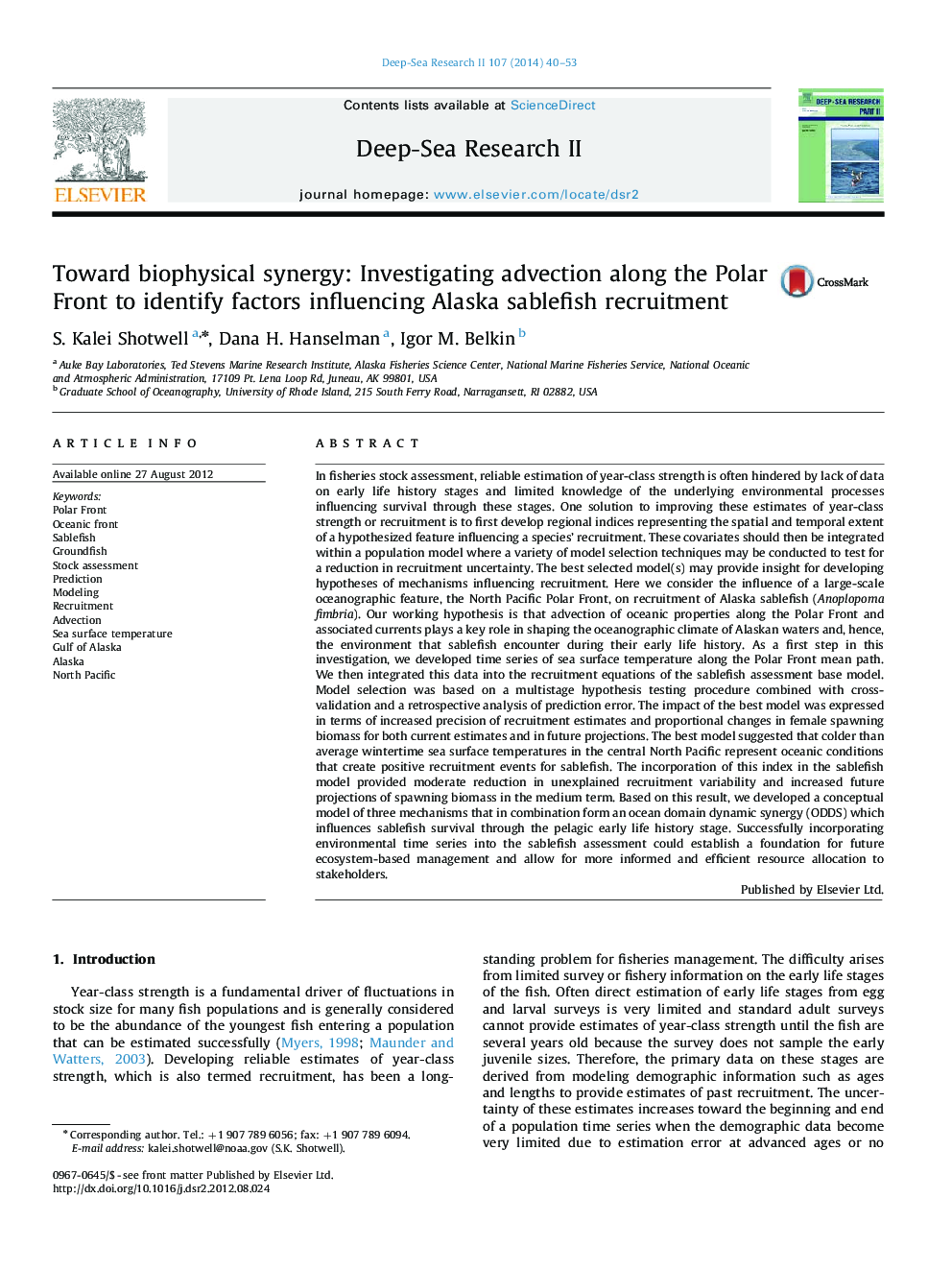| کد مقاله | کد نشریه | سال انتشار | مقاله انگلیسی | نسخه تمام متن |
|---|---|---|---|---|
| 4536350 | 1626433 | 2014 | 14 صفحه PDF | دانلود رایگان |
In fisheries stock assessment, reliable estimation of year-class strength is often hindered by lack of data on early life history stages and limited knowledge of the underlying environmental processes influencing survival through these stages. One solution to improving these estimates of year-class strength or recruitment is to first develop regional indices representing the spatial and temporal extent of a hypothesized feature influencing a species’ recruitment. These covariates should then be integrated within a population model where a variety of model selection techniques may be conducted to test for a reduction in recruitment uncertainty. The best selected model(s) may provide insight for developing hypotheses of mechanisms influencing recruitment. Here we consider the influence of a large-scale oceanographic feature, the North Pacific Polar Front, on recruitment of Alaska sablefish (Anoplopoma fimbria). Our working hypothesis is that advection of oceanic properties along the Polar Front and associated currents plays a key role in shaping the oceanographic climate of Alaskan waters and, hence, the environment that sablefish encounter during their early life history. As a first step in this investigation, we developed time series of sea surface temperature along the Polar Front mean path. We then integrated this data into the recruitment equations of the sablefish assessment base model. Model selection was based on a multistage hypothesis testing procedure combined with cross-validation and a retrospective analysis of prediction error. The impact of the best model was expressed in terms of increased precision of recruitment estimates and proportional changes in female spawning biomass for both current estimates and in future projections. The best model suggested that colder than average wintertime sea surface temperatures in the central North Pacific represent oceanic conditions that create positive recruitment events for sablefish. The incorporation of this index in the sablefish model provided moderate reduction in unexplained recruitment variability and increased future projections of spawning biomass in the medium term. Based on this result, we developed a conceptual model of three mechanisms that in combination form an ocean domain dynamic synergy (ODDS) which influences sablefish survival through the pelagic early life history stage. Successfully incorporating environmental time series into the sablefish assessment could establish a foundation for future ecosystem-based management and allow for more informed and efficient resource allocation to stakeholders.
Journal: Deep Sea Research Part II: Topical Studies in Oceanography - Volume 107, September 2014, Pages 40–53
